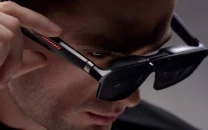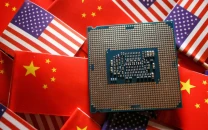China's subway to get 'bio-ID' tracking systems
The facial recognition cameras would be able to detect people’s faces

A woman looks at a Weibo advertisement as she rides an elevator inside a subway station in Beijing February 25, 2012. China's Weibo Corp will be valued at a lower-than-expected $3.46 billion when it goes public on the Nasdaq on April 17, 2014 amidst concerns about the microblogging service's slowing user growth. Picture taken February 25, 2012.PHOTO: REUTERS
China is increasingly using surveillance technology for everything from bolstering domestic security to speeding up orders at fast-food restaurants. However, that kind of monitoring is stoking concerns from human rights groups that it is building a nationwide surveillance system to quell dissent.
Amazon under fire for supplying police with facial recognition tool
Beijing’s sprawling underground transport system plans to introduce the technologies this year, the state-run China Daily newspaper said, citing Zhang Huabing, head of enterprise development for the main operator, Beijing Subway.
The facial recognition cameras would be able to detect people’s faces, potentially allowing them to bypass normal ticketing channels, while the palm scanners would enable some people to swipe their hands to get through ticket turnstiles.
At Beijing security fair, an arms race for surveillance tech
The China Daily said palm scanners were already being used on the Shanghai subway system, which compared scanned images with a database of prints in seconds.
It said Beijing has 22 urban railway lines and that more than 10 million passengers ride the city’s subway trains on an average working day.



















COMMENTS
Comments are moderated and generally will be posted if they are on-topic and not abusive.
For more information, please see our Comments FAQ